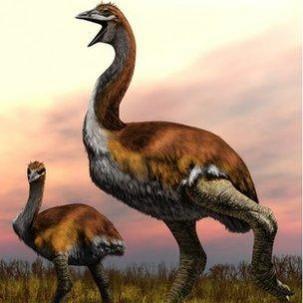Prehistoric humans are suspected of wiping out the biggest birds that ever lived after fossilised bones were found with cut marks that show that humans hunted and butchered these birds, primarily for food.
As per researchers, it's proof that the elephant birds of Madagascar were chased and butchered for sustenance. Their remaining parts have been dated to around 10,000 years.
Up to this point, the first settlers were thought to have touched base on the island around 2,500 to 4,000 years ago, much later than the birds who lived there.
"This does push back the date of human arrival by 6,000 years, at least," says Dr. James Hansford, a scientist at Zoological Society London, UK, as per BBC.

Instead of wiping out the creatures in a short timeframe, people appear to have lived close by the birds for thousands of years, before they went extinct out around 1,000 years back.
"Humans seem to have coexisted with elephant birds and other now-extinct species for over 9,000 years, apparently with limited negative impact on biodiversity for most of this period, which offers new insights for conservation today," says Dr Hansford.
Elephant birds were at one time a typical sight on Madagascar. They weighed a large portion of a ton, remained at around 3m tall and laid monster eggs, which were much bigger even than those of the dinosaurs. The eggs are said to be 150 times bigger than an average chicken egg. The birds had huge legs, taloned hooks, and a long, massive neck.
These elephant birds, Aepyornis and Mullerornis, lived among other noteworthy species on the island, including giant lemurs, which went extinct too.
The research topples our thoughts regarding the first human landings on the tropical island. It shows how agriculture may not have been the primary source of food for them, but hunting.
"We do not know the origin of these people and won't until we find further archaeological evidence," says Prof Patricia Wright from Stony Brook University, co-researcher of the study.
"The question remains - who these people were? Moreover, when and why did they disappear?"
The research has been published in the journal Science Advances.















